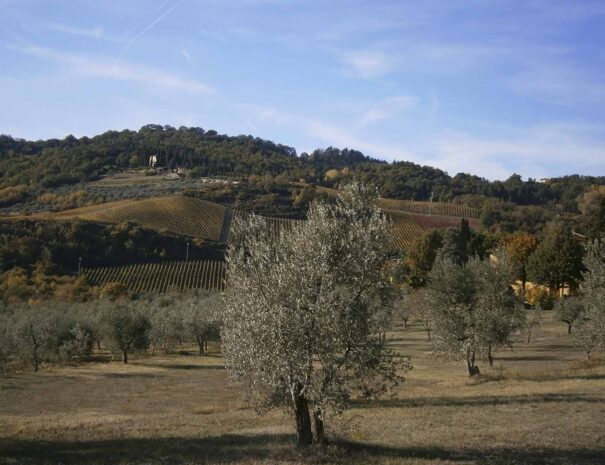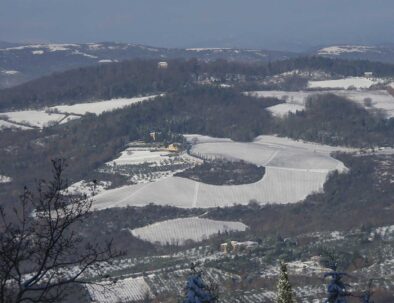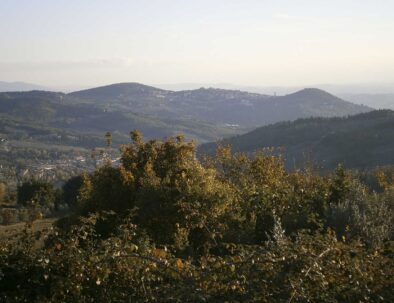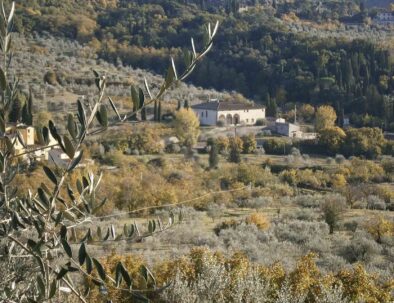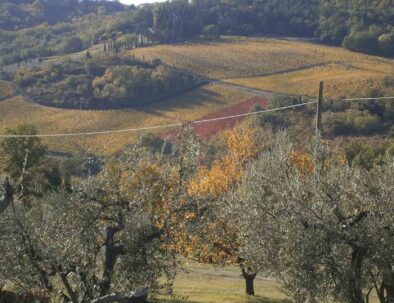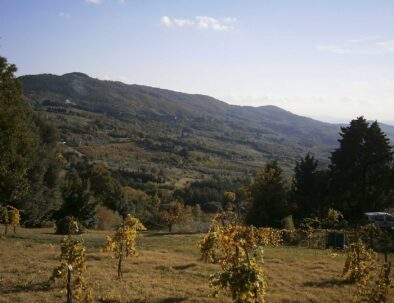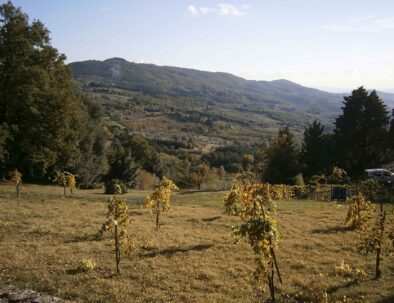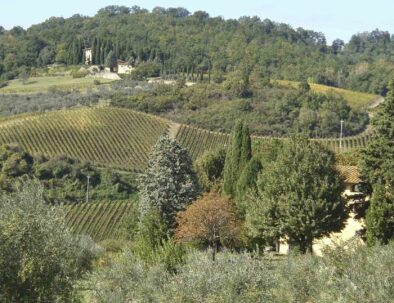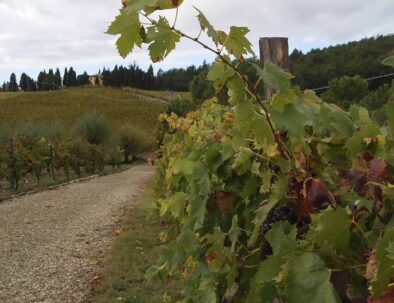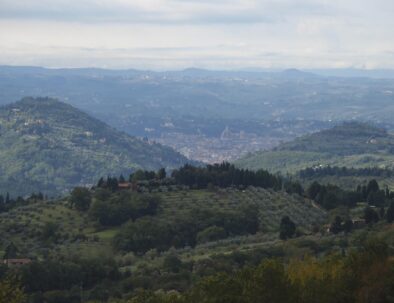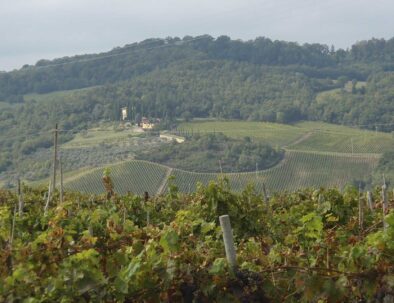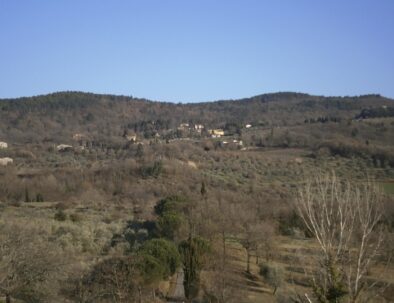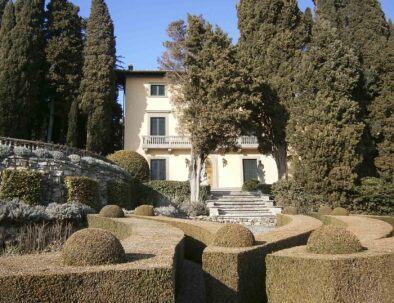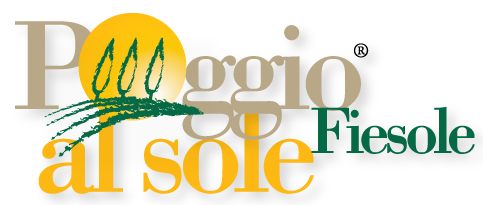Ortaglia
Itinerary 4
"Like was a painting" Poggio al Sole - Tenuta Villa Ortaglia (- Querciola) - Poggio al Sole
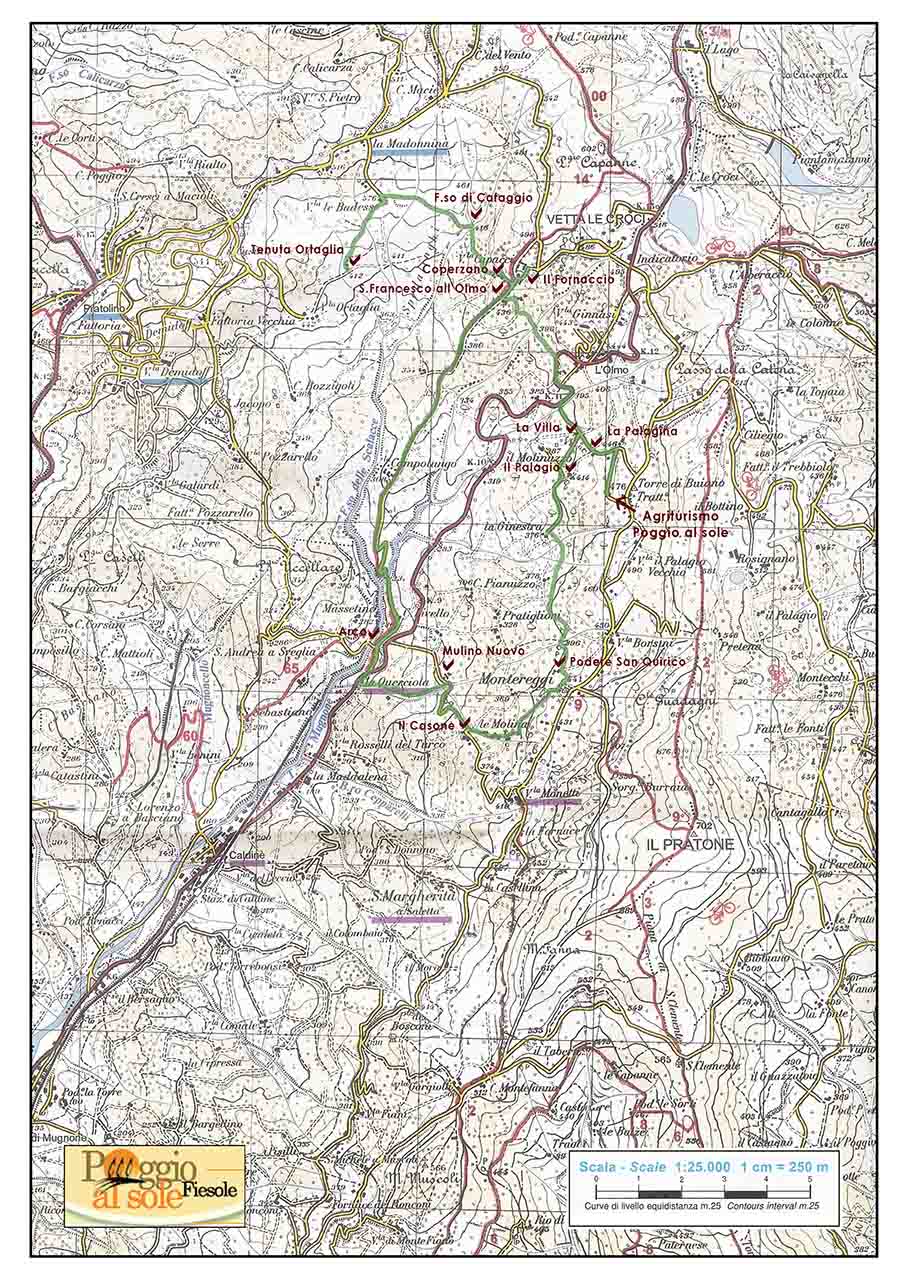
Distance:
1° option: Poggio al Sole – Tenuta Villa Ortaglia – Poggio al Sole: 8 km
2° option: Poggio al Sole – Tenuta Villa Ortaglia – Querciola – Poggio al Sole: 12 km
Elevation grade:
1° option: 390 m
2° option: 560 m
Difficulty:
1° option: easy
2° option: easy to average
(be careful when fording streams during rainy periods)
Estimated time:
1° option: 3 hours
2° option: 5 hours
Suggested time of the year: all year round (there may be muddy segments during rainy days).
Interest: landscape-history.
Webpages to know more:
http://www.bml.firenze.sbn.it/it/caldine.htm
http://www.cultura.toscana.it/architetture/giardini/firenze/parco_villa_demidoff.shtml
http://www.ortaglia.com/
The first segment of the footpath is similar to Itinerary 3, which you find below.
As we leave Agriturismo Poggio al Sole we get to a crossroad where a rural road stands: Via Torre di Buiano. Turn left on the descending road; pass by the dilapidated rural complex La Palagina until you reach a large plain, with a hay barn and the farmhouse La Villa. A spring and a tank can be found in proximity, where one can hear water gurgling after abundant rainfalls.
Now, instead of turning left as in itinerary n.3, go straight down the road surrounded by vineyards: on your right stands the village Olmo with Villa Ginnasi tower, and a little further up Villa Capacci, formerly known as Fattoria dell’Olmo (our first destination of the trail).
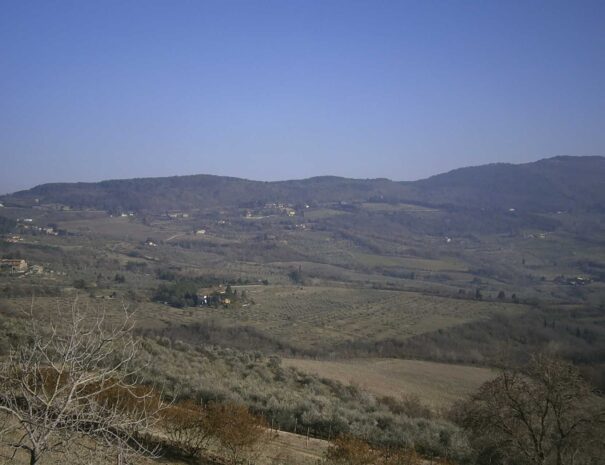
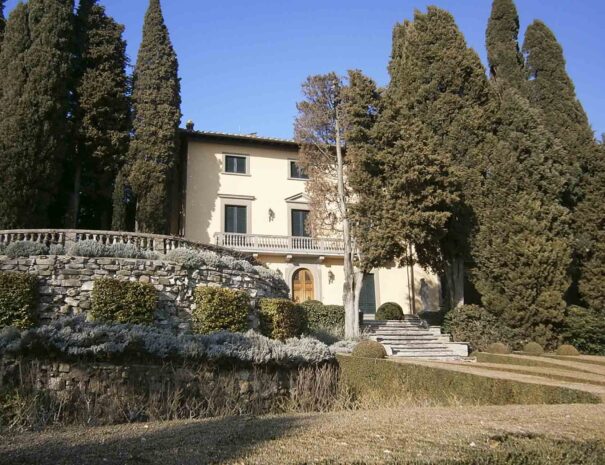
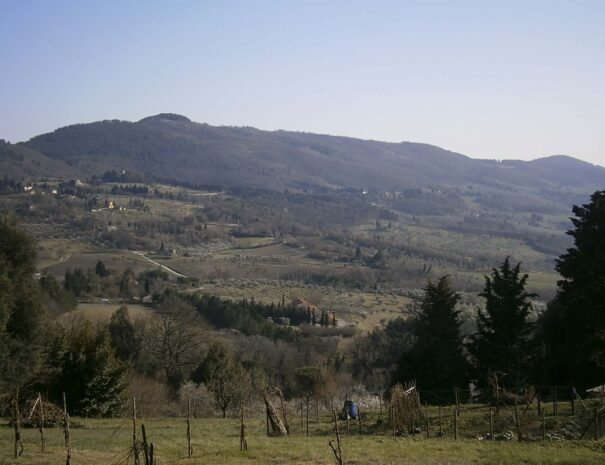
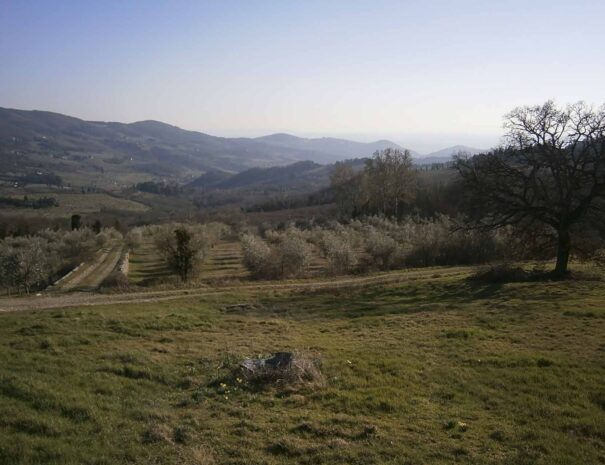
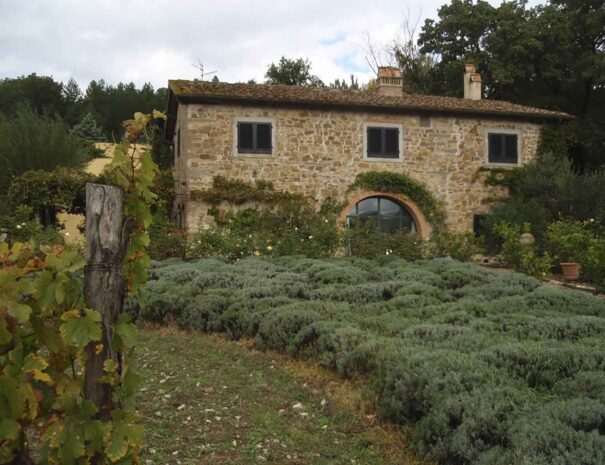
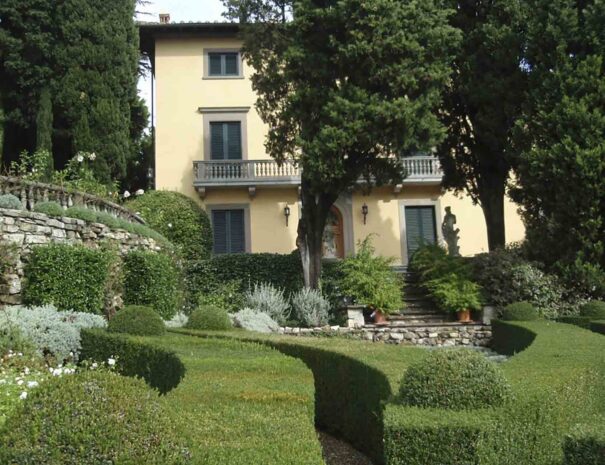
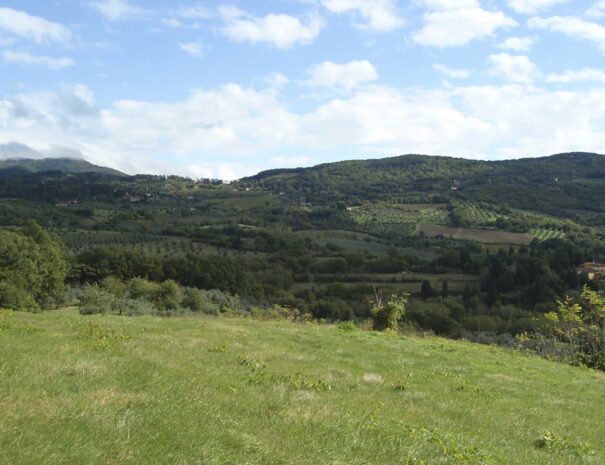
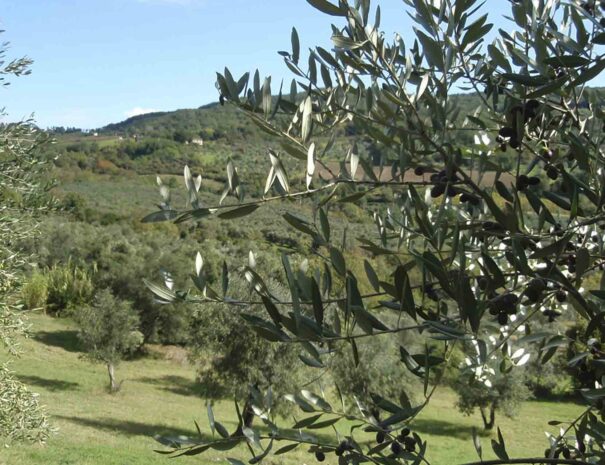
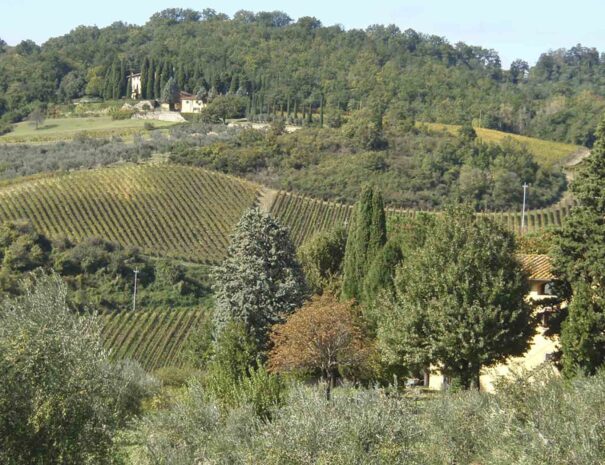
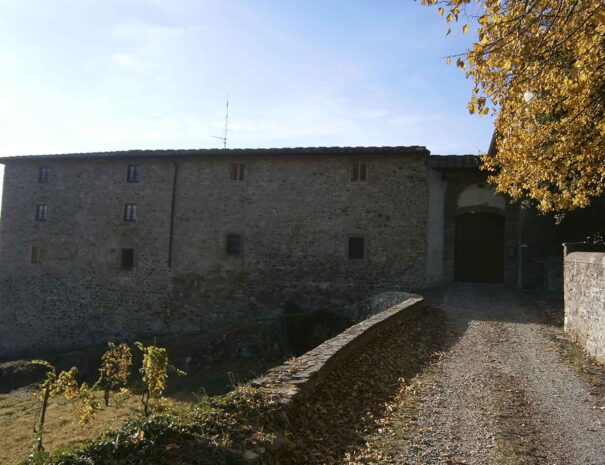
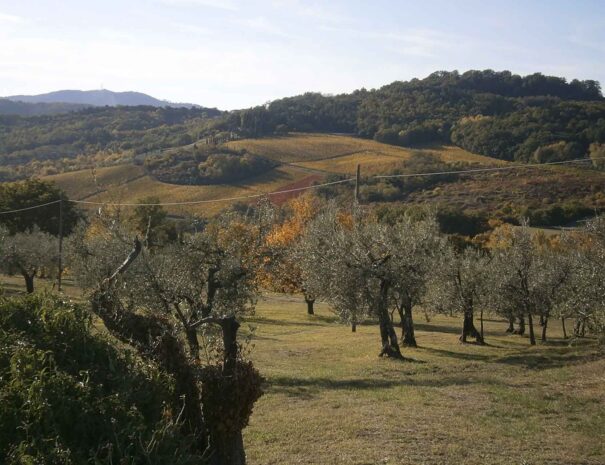
Be careful when you walk this road, since there are no signs: by the first crossroads, in proximity of the vineyards of the Farmhouse Borsini (who once owned 11 lands in this area), ignore the climbing road and turn left, then, by a second crossroads in proximity of a cypress tree, turn right, leaving the main road and driving along a fence on the left.
Cross the channel Fosso di Buiano; then take again the direction on the left. Two splendid rural structures will come in sight, both of which display the typical dovecot in the middle of the roof. By the following crossroads turn right passing by the B&B Palagio, then walking through olive groves and vineyards, the barn hay and the farmhouse La Villa and following the uphill road (which you are now doing in reverse direction), you will find yourself back at Agriturismo Poggio al Sole, from where your excursion started.
Itinerary and photos by Giovanni Crescioli:: www.FiesoleBike.it
